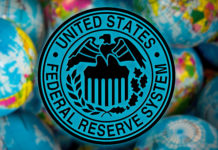After keeping noticeably quiet in recent months, the Bank of Canada gave us a bit more food for thought this week. Unsurprisingly, trade tensions were a key theme with both Governor Poloz and Senior Deputy Governor Wilkins noting the US-China trade war (and related uncertainty) could cost the global economy around $1 trillion in lost output by 2021. While that’s taking a toll on Canada’s economy, the impact to date hasn’t been significant enough for the BoC to join its global counterparts in lowering rates. One reason it has remained on the sidelines is household debt. Regarding October’s steady rate decision, Wilkins reiterated that taking out insurance against downside inflation risks “wasn’t worth the cost” of adding to vulnerabilities around high household debt down the road. That said, the BoC has opened the door to a rate cut, and will continue to weigh the costs and benefits of such insurance in the coming months. Next week’s GDP data will be closely watched in that regard.
Our forecast is for a 1.5% annualized increase in Q3 GDP, just a touch stronger than the BoC’s 1.3% projection. Both would be down from average (but choppy) growth of 2.1% over the first half of the year. The negative impact of global trade tensions will be evident in soft business investment (also weighed down by ongoing challenges in the energy sector) and weaker exports. We expect the two combined to shave about 3/4 ppt off growth in Q3. That left households to do much of the heavy lifting, with housing activity alone likely contributing 1/2 ppt to growth. Lower market interest rates (reflecting global central bank easing) have helped spur on demand, with mortgage debt now rising at its fastest quarterly pace since 2017 (hence the BoC’s fresh worries about household debt). We think consumer spending increased at a healthy 2% pace, supported by a remarkably resilient labour market and rising wages.
As the BoC noted in October, it’s the household sector that will be key in upcoming monetary policy decisions. Signs that trade tensions and slowing global growth are having an effect beyond business investment and exports could make a dose of insurance worth the cost. Even an increase in trade tensions, or more pronounced slowing in exports and investment, could have the BoC taking out a policy. However, ongoing resilience in consumer spending and a further acceleration in housing activity would reduce the need for insurance, and potentially also raise the cost. We don’t think next week’s GDP report will be enough to change the BoC’s calculus ahead of its December 4th rate decision. But we still see the potential for a rate cut early next year.











